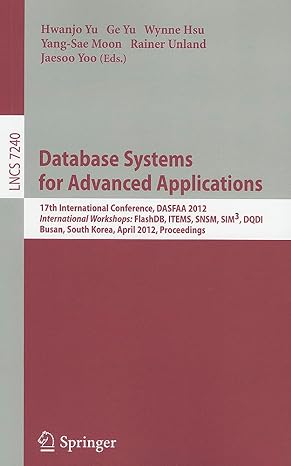Answered step by step
Verified Expert Solution
Question
1 Approved Answer
Special Publication 8 0 0 - 3 0 , provides the essential elements of information that organizations can use to communicate the results of risk
Special Publication provides the essential elements of information that organizations can use to communicate the results of risk assessments. Risk assessment results provide decision makers with an understanding of the information security risk to organizational operations and assets, individuals, other organizations, or the Nation that derive from the operation and use of organizational information systems and the environments in which those systems operate.The essential elements of information in a risk assessment can be described in three sections of the risk assessment report or whatever vehicle is chosen by organizations to convey the results of the assessment: i an executive summary; ii the main body containing detailed risk assessment results; and iii supporting appendices.Reference NIST Guide for Conducting Risk Assessments as you complete this report, paying special attention to Section Application of Risk Assessments.Your report should focus on either Tier Tier or Tier Tip: Search for Tier or Tier or Tier throughout the NIST document for references to these Tiers Executive SummaryInclude the following: List the date of the risk assessment. Summarize the purpose of the risk assessment. Describe the scope of the risk assessment. For Tier and Tier risk assessments, identify: organizational governance structures or processes associated with the assessment eg risk executive function budget process, acquisition process, systems engineering process, enterprise architecture, information security architecture, organizational missionsbusiness functions, missionbusiness processes, information systems supporting the missionbusiness processes For Tier risk assessments, identify: the information system name and locations security categorization, and information system ie authorization boundary. State whether this is an initial or subsequent risk assessment. If a subsequent risk assessment, describe the circumstances that prompted the update and include a reference to the previous Risk Assessment Report. Describe the overall level of risk eg Very Low, Low, Moderate, High, or Very High List the number of risks identified for each level of risk eg Very Low, Low, Moderate, High, or Very High Body of the Report: Part Include the following: Describe the purpose of the risk assessment, including questions to be answered by the assessment. For example: How the use of a specific information technology would potentially change the risk to organizational missionsbusiness functions if employed in information systems supporting those missionsbusiness functions; or How the risk assessment results are to be used in the context of the RMF eg an initial risk assessment to be used in tailoring security control baselines andor to guide and inform other decisions and serve as a starting point for subsequent risk assessments; subsequent risk assessment to incorporate results of security control assessments and inform authorization decisions; subsequent risk assessment to support the analysis of alternative courses of action for risk responses; subsequent risk assessment based on risk monitoring to identify new threats or vulnerabilities; subsequent risk assessments to incorporate knowledge gained from incidents or attacks Identify assumptions and constraints. Describe risk tolerance inputs to the risk assessment including the range of consequences to be considered Identify and describe the risk model and analytic approach; provide a reference or include as an appendix, identifying risk factors, value scales, and algorithms for combining values. Provide a rationale for any riskrelated decisions during the risk assessment process. Describe the uncertainties within the risk assessment process and how those uncertainties influence decisions. Body of the Report: Part Include the following: If the risk assessment includes organizational missionsbusiness functions, describe the missionsfunctions eg missionbusiness processes supporting the missionsfunctions interconnections and dependencies among related missionsbusiness functions, and information technology that supports the missionsbusiness functions If the risk assessment includes organizational information systems, describe the systems eg missionsbusiness functions the system is supporting, information flows tofrom the systems, and dependencies on other systems, shared services, or common infrastructures Summarize risk assessment results eg using tables or graphs in a form that enables decision makers to quickly understand the risk eg number of threat events for different combinations of likelihood and impact, the relative proportion of threat events at different risk levels Identify the time frame for which the risk assessment is valid ie time frame for which the assessment is intended to support decisions List the risks due to adversarial threats see Table F in Appendix F List the risks due to nonadversarial threats see Table F in Appendix F
Step by Step Solution
There are 3 Steps involved in it
Step: 1

Get Instant Access to Expert-Tailored Solutions
See step-by-step solutions with expert insights and AI powered tools for academic success
Step: 2

Step: 3

Ace Your Homework with AI
Get the answers you need in no time with our AI-driven, step-by-step assistance
Get Started


